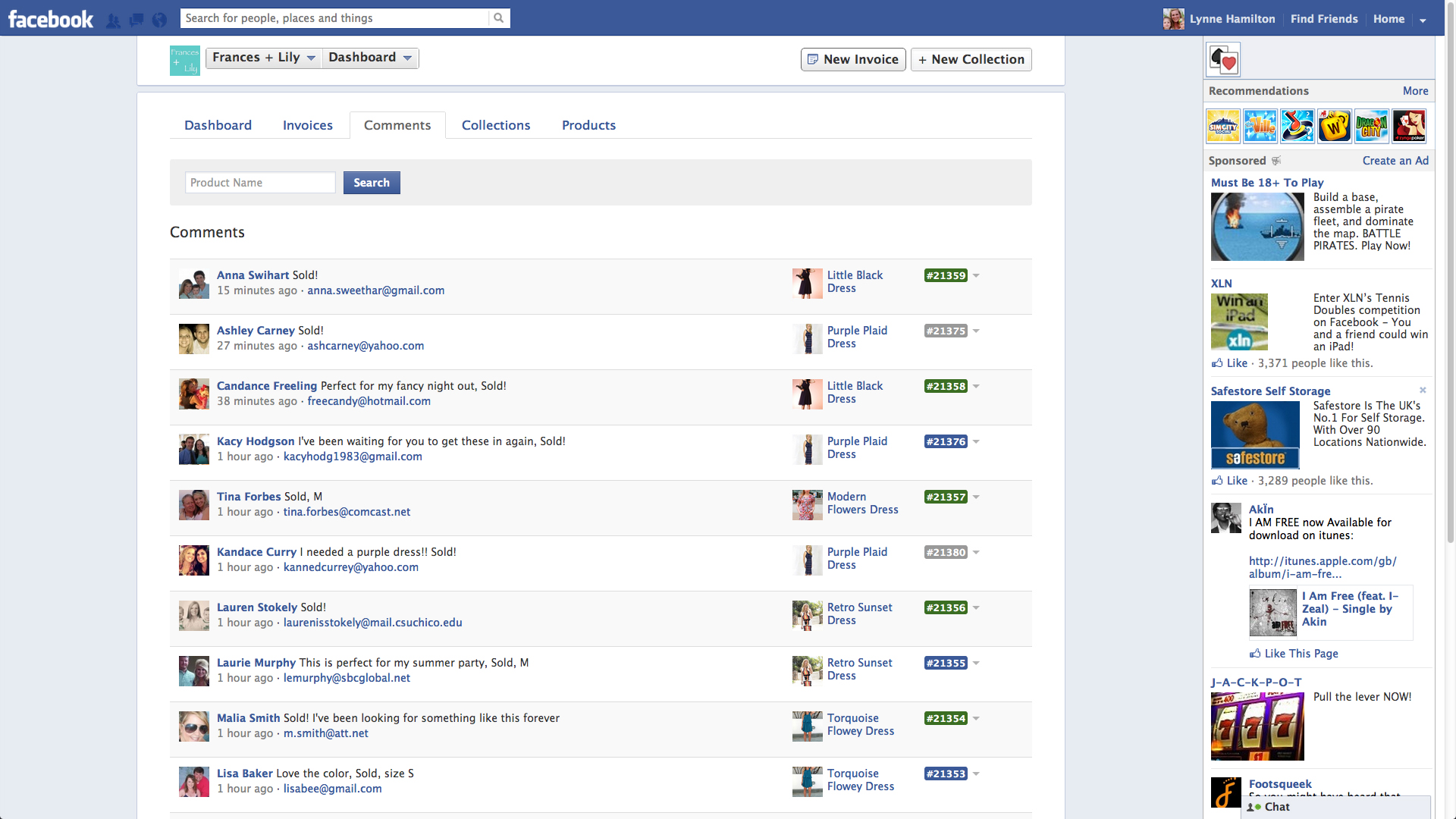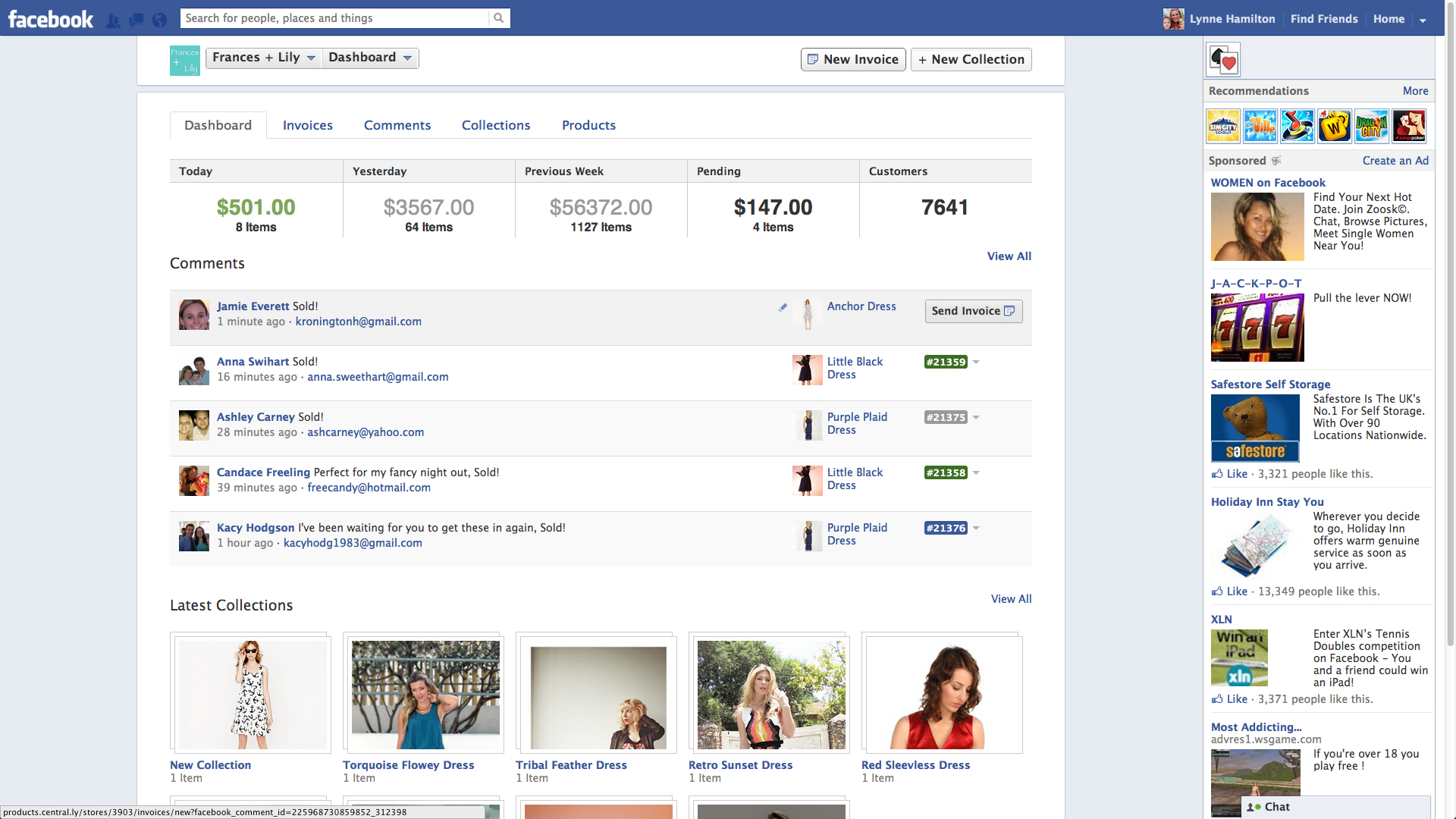Oh look, maybe Facebook commerce can work. Soldsie, a San Francisco-based startup which was previously operating under the name Central.ly, is today officially launching a social media point-of-sale platform that lets business sell on Facebook using Facebook comments. The company soft launched its service in May of this year, and has now reached over $1 million in transactions across its network of 75 active customers. These customers operate fan pages for their businesses, generally retail-orientated, which sees them posting pictures of the items they have for sale. The businesses’ customers, upon seeing the post, only have to comment “sold” on the post, after first registering the Soldsie Facebook application.
The gimmick seems to work. Customers react to limited quantity items like it’s an auction they have to win. Meanwhile, typing in the word “sold” is probably one of the easiest ways to impulse buy on Facebook – or anywhere else, for that matter.
Soldsie’s founders Chris Bennett and Arrel Gray started off building a service called Central.ly in February 2011, which was going to work something like an About.me for the SMB market. But the more they began to talk to business owners across the country, they realized there was far more interest in social, and especially its impact on commerce.
“We noticed over and over, that we’d walk in and the business owner would be on Facebook,” says Gray, describing their visits to local shop owners. “And especially if they did retail, they would post photos of their new stuff. That would drive most of the engagement on Facebook. People would like it, share it, comment and people would actually come into the store…that’s when it clicked,” he says. “There’s obviously demand already there, you have this captive audience that’s interested in what you’re selling, why not make the sale right there?”
 So they stopped development on what Central.ly was doing, and in fall 2011, began work on the new idea, participating in 500 Startups along the way. But the first version, which launched in December 2011, didn’t really work. No one bought anything because it was just a way for businesses to upload a product photo with a price. Then they ran across a popular kids clothes retailer on Facebook (Lolly Wolly Doodle), a page that now has some 300,000 Likes. The retailer posted photos of merchandise, and customers scrambled to buy….just by entering in their email address in the comments. Lolly Wolly Doodle hit $1 million in sales three years ago, for what it’s worth.
So they stopped development on what Central.ly was doing, and in fall 2011, began work on the new idea, participating in 500 Startups along the way. But the first version, which launched in December 2011, didn’t really work. No one bought anything because it was just a way for businesses to upload a product photo with a price. Then they ran across a popular kids clothes retailer on Facebook (Lolly Wolly Doodle), a page that now has some 300,000 Likes. The retailer posted photos of merchandise, and customers scrambled to buy….just by entering in their email address in the comments. Lolly Wolly Doodle hit $1 million in sales three years ago, for what it’s worth.
What was happening is that the retailer was invoicing the customers via PayPal (via the email provided), then shipping the orders. That’s when Bennett and Gray realized what to do with Soldsie – they could automate that same process.
How Typing “Sold” Into A Comments Box Becomes A Sale
And now that’s how Soldsie works, effectively. Users only have to register with the application one time, which is what allows the app access to their personal data including their email address. At first, Soldsie only supported PayPal, but now via WePay integration, it also accepts credit cards. And customers can also optionally enter in credit card info to keep on file, to make “checkout” (if that’s what you call it) easier. In Soldsie’s under-the-radar trials, the company brought in $300,000 worth of transactions for its business customers during August, and a million total since May. The businesses using Soldsie are across the board, including shops for children’s clothes, jewelry, fashion, and more. Meanwhile, Soldsie takes 3% per transaction, in addition to credit card and PayPal fees.
On the backend, the service provides businesses with a streamlined interface for managing the invoicing process, and is working to add more tools that will help retailers with shipping, too. For customers, shopping on Facebook, after registering with Soldsie, means simply typing in the word “sold.”
Currently, the system doesn’t support sharing purchases directly to Timelines or Open Graph support, but the team is now taking in feedback from customers to figure out what to focus on next.
This startup is interesting not just because it has thought of a new way to automate shopping, but also because of the wake of reports indicating that Facebook commerce (or “f-commerce”) is not all that it’s cracked up to be. “What a lot of what the big brands have done is that they’ve buried their stores in tabs,” explains Bennett as to what other retailers have been doing wrong. “You had to click on a tab to go into a store, and then you’d have this shopping experience that’s similar to a website. It didn’t really make sense on social.” He says that on social, the biggest features are the photos, sharing, liking and commenting. “The big brands weren’t using any of these features, besides liking.”
Soldsie changes that. Interested customers can now sign up here.


